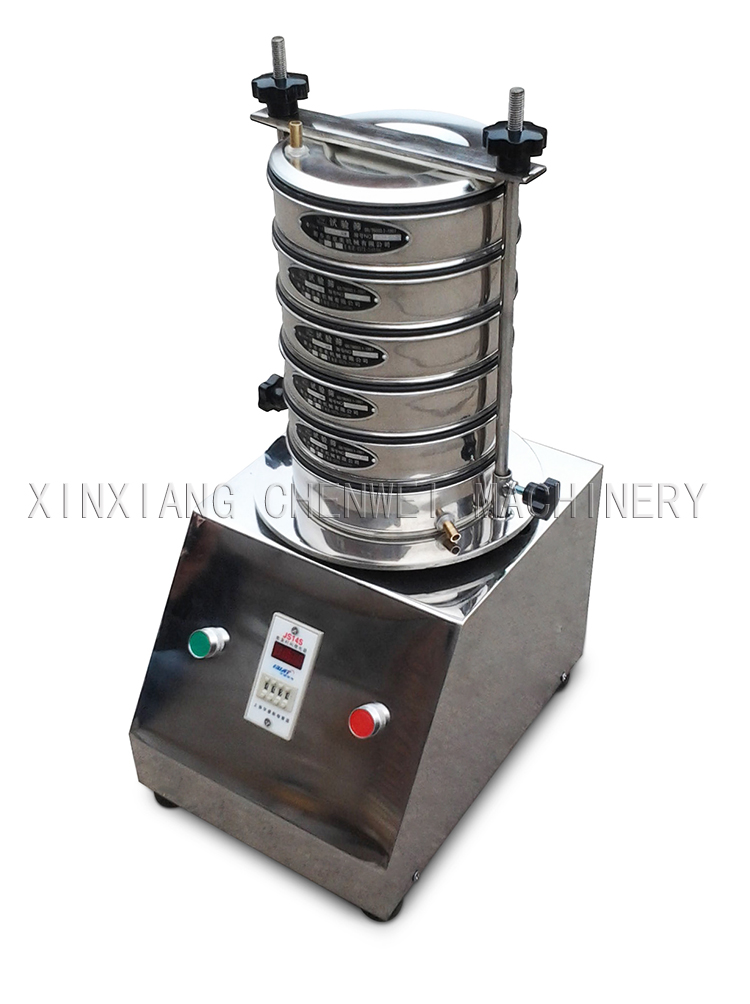The amount of discards should be minimized when processing mineral raw materials, but the problem of tailings accumulation is still unavoidable. At present, Russian waste has reached 12 billion tons. In many cases, the amount of useful components therein exceeds the content of natural mineral deposits. For example, over the past 20 to 30 years of placer mining and multi-metal mine old tailings gold grade of 1.2 ~ 2.0g / t. Reprocessing of tailings containing colored metals in mine tailings dams, in many cases, the complexity of the process, which may include re-election, flotation and hydrometallurgy. According to its technical and economic indicators and the quality of the concentrate obtained, it is not competitive. It may be economically advantageous to recover useful components from the current beneficiation tailings. As evidenced by foreign and Russian experience, the application of heap leaching can cost-effectively break down gold and non-ferrous metals in rock and beneficiation waste. Russia has also accumulated good experience in heap leaching of gold from beneficiation tailings. According to the similar process developed by the Central Nonferrous Metals and Precious Metals Exploration and Research Institute, the processing of tailings containing 1.5g/t gold in the South Ural Gold Company can guarantee a recovery rate of 50% to 60%. According to the natural protection policy of tailings dam construction, it is necessary to form a process-causing deposit as much as possible in the tailings accumulation, that is, the tailings are subjected to alluvial action, so that the metal minerals are enriched in the edge area of ​​the tailings dam so as to be recycled in an appropriate way. Useful for metal minerals without compromising the stability of the dam. The gold-containing old tailings are ground, added with polyacrylamide to flocculate gold and sulfide, and then added with collector butyl xanthate, combined with coal -oil agglomerating agent, and finally floated, and the gold concentrate obtained contains 16g/ t Au, the recovery was 85%. 俄罗斯希宾Trask apatite - nepheline ores addition to the main component and apatite nepheline, but also an iron ore containing titanium magnet, and sphene Aegirine. In the past, magnetic separation, flotation and re-election were used to comprehensively utilize titanium magnetite, vermiculite and neolith. However, due to high production cost, lack of effective flotation reagents, complicated process flow and low ore dressing index, the process has not been adopted in the industry. Recently, chemical and mechanical beneficiation processes have been used to obtain vermiculite concentrate and neon concentrate. The solution not only stabilizes the high quality vermiculite concentrate and neon concentrate, but also greatly reduces the influence of the feed composition on the process index. The Finnish apatite flotation tailings contain vermiculite and neolithic. Chemical method for preparing vermiculite concentrate: hydrodynamic classification, wet weak magnetic separation, wet screening to remove the remaining nepheline and apatite in the apatite flotation tailings; using high gradient magnetic separation to obtain the neolith concentrate 1; Two stages of sulfuric acid leaching, removing nepheline and apatite again; dry magnetic separation to obtain vermiculite concentrate and neon concentrate 2 . The first stage leaching temperature is 20 to 30 ° C sulfuric acid concentration does not exceed 11.5%, the second stage leaching temperature is 45 to 55 ° C, and the sulfuric acid concentration is 5% to 10%. The vermiculite concentrate obtained by the Kibinsk apatite company is leached by nitric acid, and the leachate contains calcium nitrate, which is treated with sulfuric acid to obtain a gypsum product and regenerated nitric acid. The nitric acid leaching residue is subjected to sulfation and water leaching, the leaching residue is discarded, the solution is hydrolyzed and the sulfuric acid is hydrolyzed to obtain a TiOHP0 4 ·H 2 0 adsorbent and artificial rutile. Kazakhstan copper companies Barr Hashemi copper smelter copper slag accumulation in 2002 of about 30 million t, an average of 0.6% to 0.8% copper, currently produces 600,000 t copper slag every year. The company has been using floatation to treat copper slag since 1998. In 2001, the treatment of copper slag was 3.095 million tons, and the slag treated by flotation accounted for 33% of the total treatment. The copper slag is ground to 65%-0.074mm and floated. The copper concentrate recovery rate is 36%-65%. The copper smelting slag contains 1.2% Cu, SiO 2 <20%, and Fe 55%. The process of recovering copper includes slow cooling, crushing, grinding, flotation and flotation tailings magnetic separation. Flotation application of butyl xanthate and T-80 foaming agent, concentrate copper grade of 10.7%, the recovery rate of 89.7%. Magnetic separation at 0.15T magnetic induction, the iron concentrate grade obtained is 60%, and its quality meets the smelting requirements.
A fully re-equipped lab sieve at Chenwei Corporation contains a full range of screening and fluid bed processing equipment that is readily reconfigured to simulate customer installations for trials using supplied materials. All models of laboratory sieve are quick-clean designs allowing easy access to interior components for rapid inspection, disassembly, screen changes and cleaning. Most notable is the lab's new, full scale, fluid bed processing equipment for drying, cooling and moisturizing of bulk solid materials. The exclusive, circular vibratory design enables entire systems consisting of fluid bed processor, heater/cooler/moisturizer, blower and dust collector, to be self-contained on mobile frames with casters, offering testing flexibility not practical with larger, heavier, rectangular units of equivalent capacity.
There are two Test Sieve for lab,one is standard test sieve,the other is electromagnetic vibration sieve.In comparison,the electromagnetic vibration sieve has mush higher accuracy for particles size distribution test. Up to 600 mesh sieve can be used on it.
Feature
* Lab use for particle size analysis.
* High efficiency and high precision,
* Tight Structure and low noise
* Precise timer function
* Up to 600mesh can be test
Test Sieve Test Sieve,Stainless Steel Sieve,Soil Testing Sieve,Grain Test Sieve XINXIANG CHENWEI MACHINERY CO.,LTD , https://www.cwsieve.com
